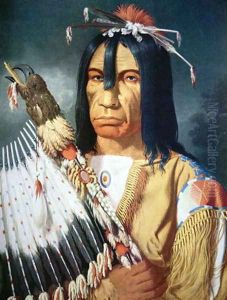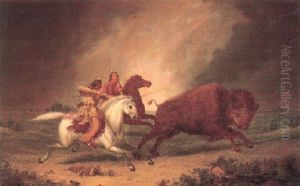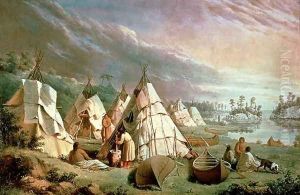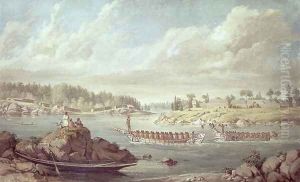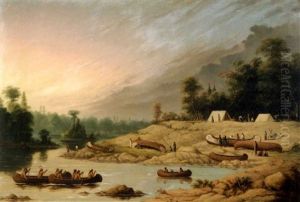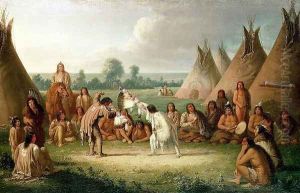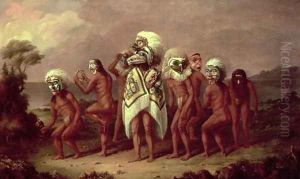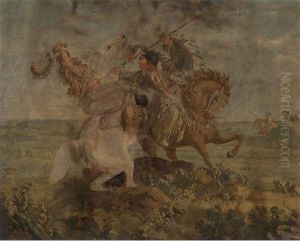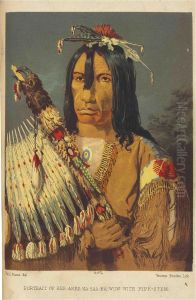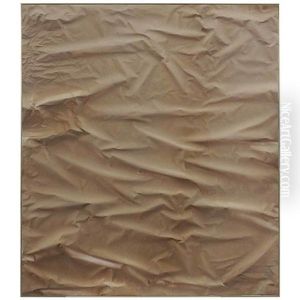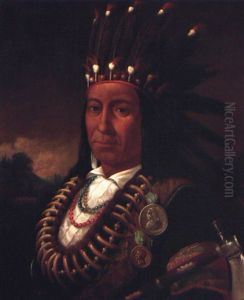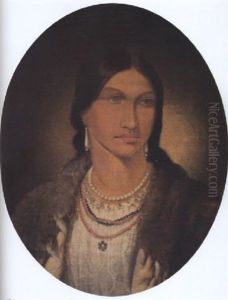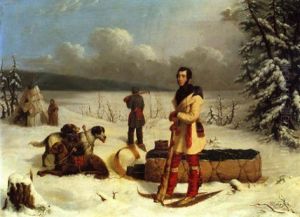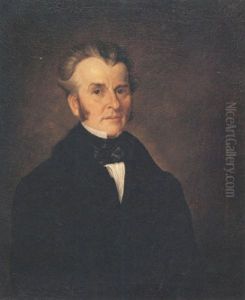Paul Kane Paintings
Paul Kane was an Irish-Canadian painter, born in Mallow, County Cork, Ireland in 1810. At a young age, his family emigrated to Canada, settling in Toronto. Kane became one of the first major Canadian painters, particularly noted for his paintings of Indigenous peoples and landscapes of the Canadian West. His work provides a visual record of the early colonial period and the interaction between the Indigenous peoples of Canada and European settlers and traders. Kane's interest in Indigenous cultures was deeply personal and professional; he spent considerable time living among various Indigenous communities, learning about their customs, languages, and ways of life.
Kane's journey across Canada was monumental for its time. Starting in 1845, he embarked on a voyage that would take him from Toronto to the Pacific Coast and back, traversing the vast territories of the Hudson's Bay Company. Along the way, he sketched and painted landscapes, people, and scenes of daily life, capturing the essence of the places he visited and the people he encountered. These artworks were not only significant for their artistic value but also for their ethnographic and historical importance. Upon his return, Kane found patrons who supported his work, including George Brown, a prominent Toronto politician and newspaper publisher. This patronage allowed him to produce a series of oil paintings based on his sketches, which remain some of his most celebrated works.
Kane's legacy is multifaceted. As an artist, he is remembered for his ability to capture the beauty and harshness of the Canadian wilderness with a romantic sensibility that was popular in the mid-19th century. His paintings are considered important documents of the time, offering insights into the lives of Indigenous peoples and the natural landscape before significant European settlement and industrialization changed them forever. Kane's work is held in high esteem in Canadian art history, representing a crucial period of transition and recording the early encounters between different cultures in North America.
Despite his contributions to Canadian art and history, Kane's work has also been the subject of scrutiny and criticism, particularly regarding the accuracy and representation of Indigenous cultures. Scholars and Indigenous communities have pointed out that while Kane's paintings are valuable historical documents, they are also influenced by the artist's perspectives and biases, as well as the colonial context in which he worked. Today, his paintings are studied not only for their artistic value but also for what they reveal about the complexities of cultural interactions and colonial expansion in 19th-century Canada. Paul Kane passed away in Toronto in 1871, leaving behind a rich legacy that continues to be explored and reevaluated by historians, art historians, and Indigenous scholars alike.
